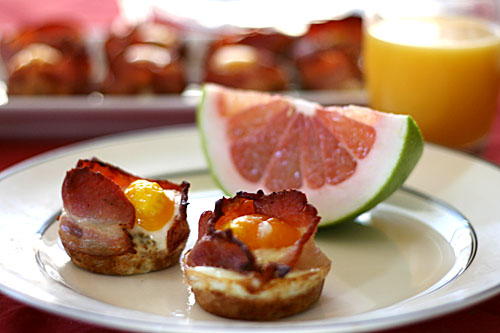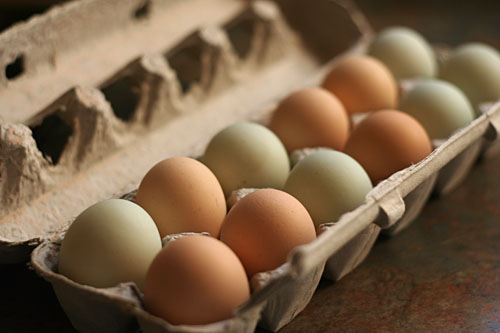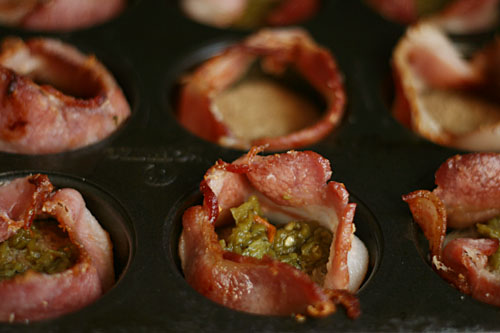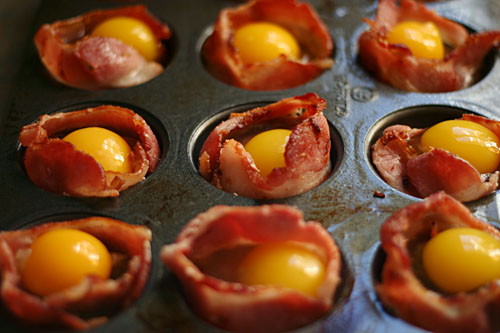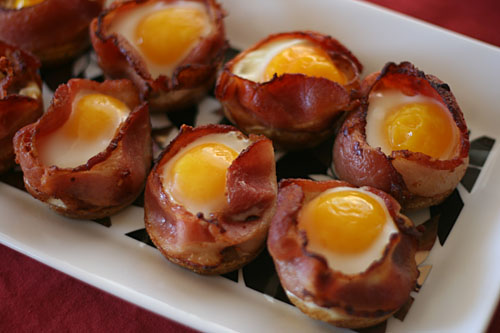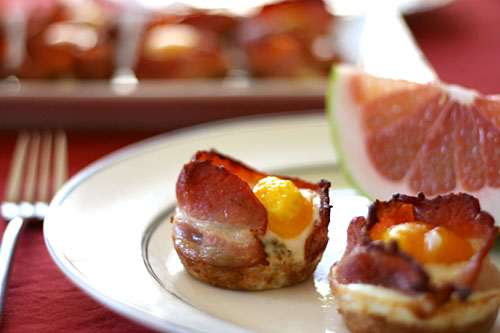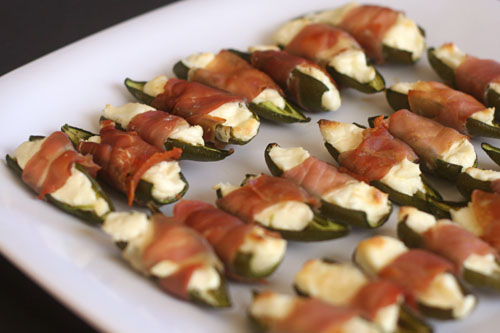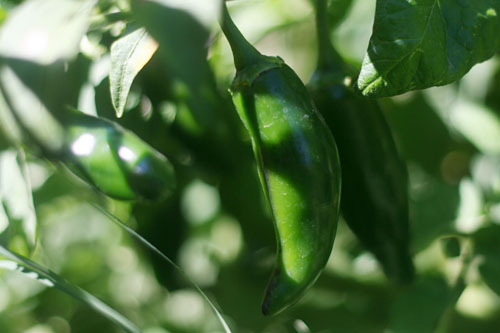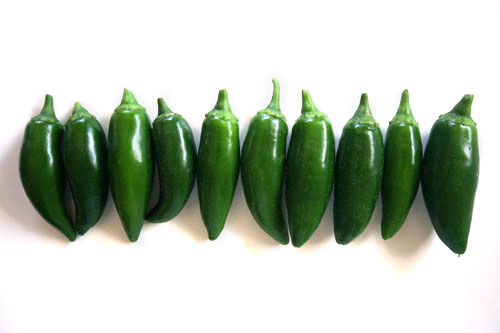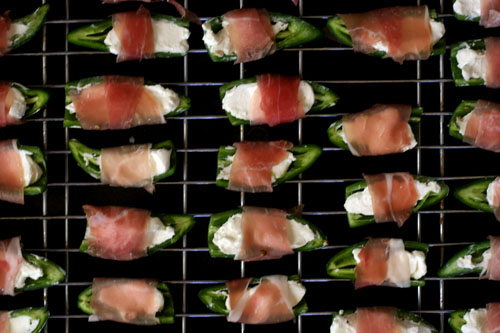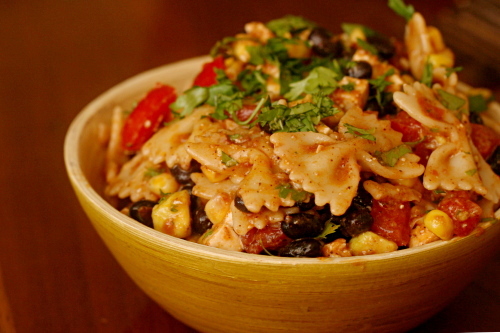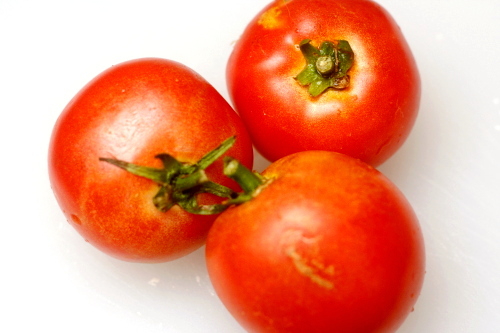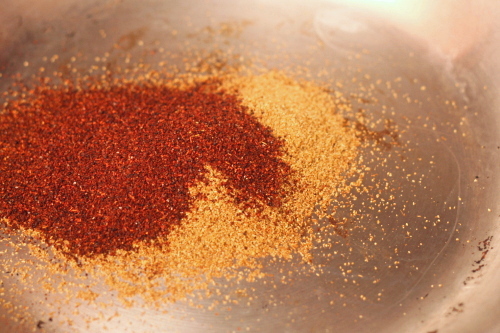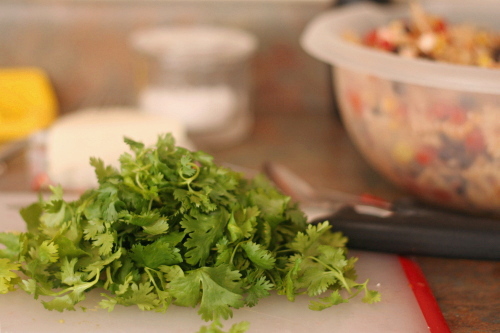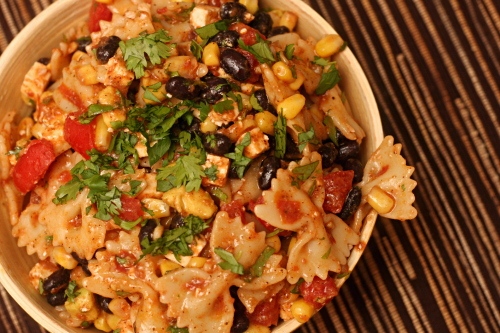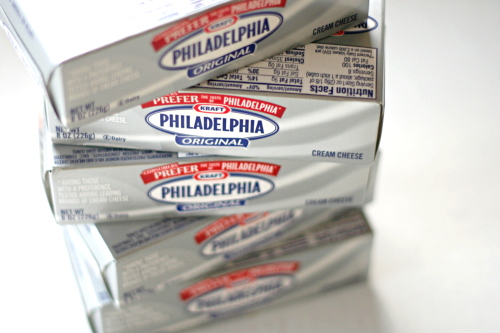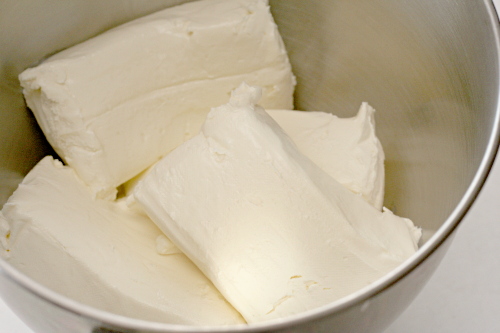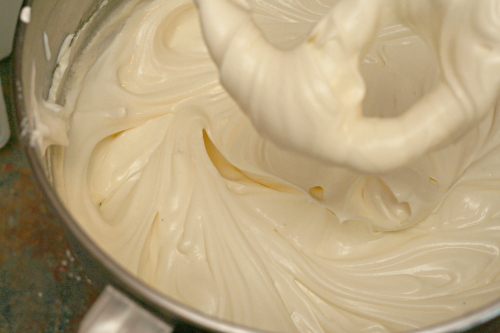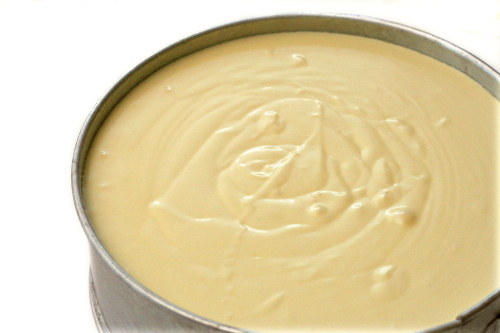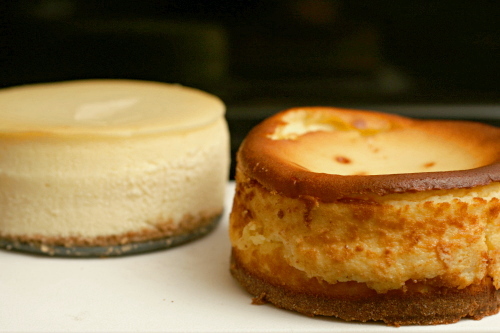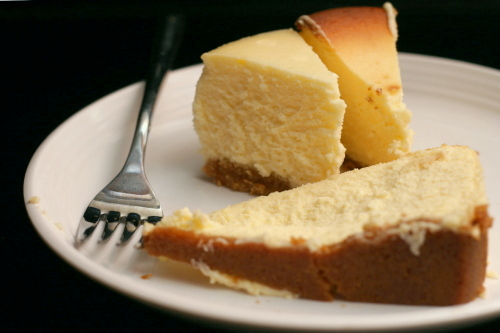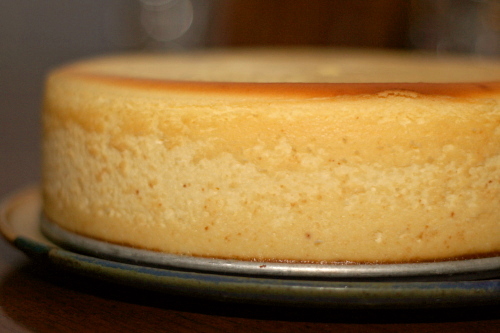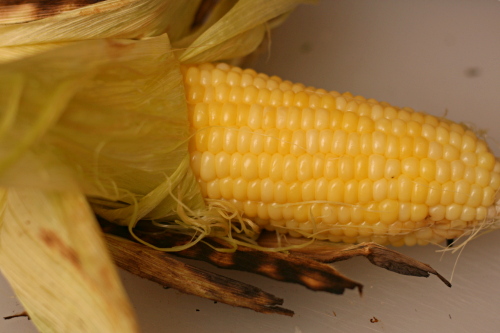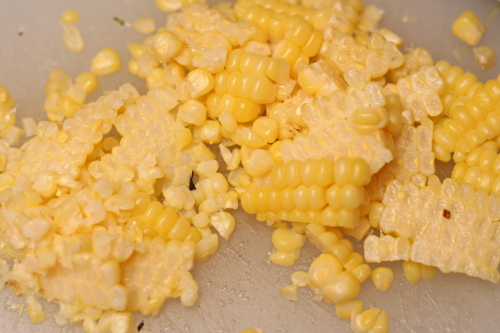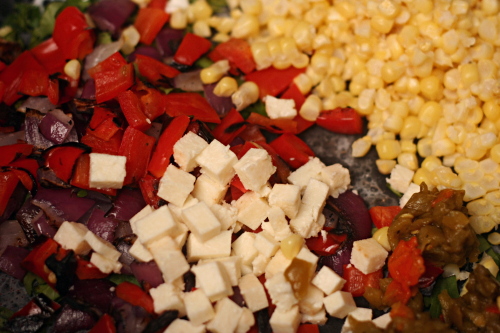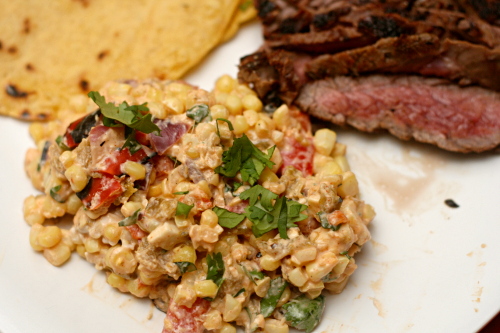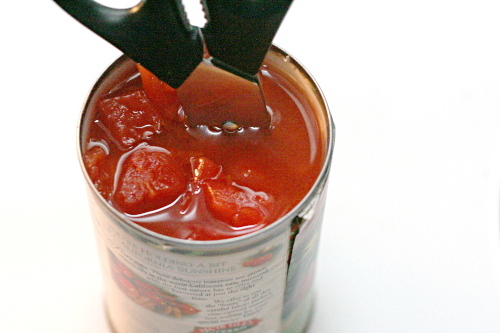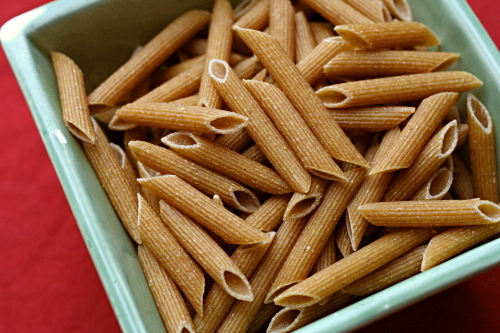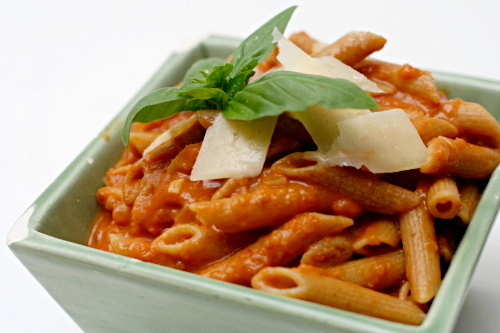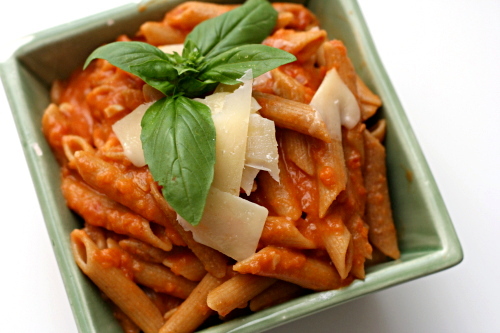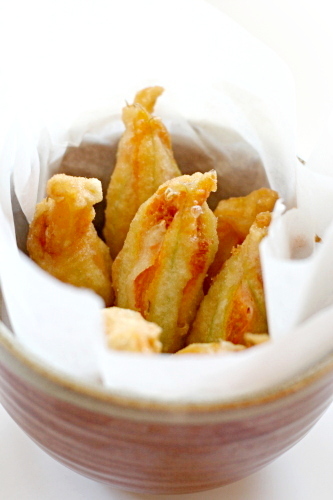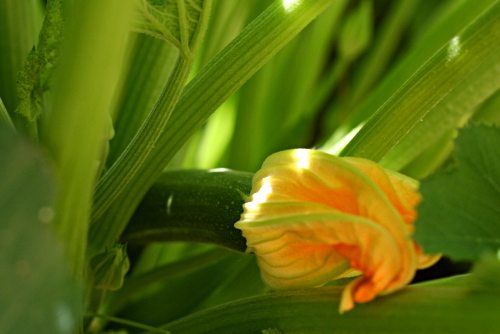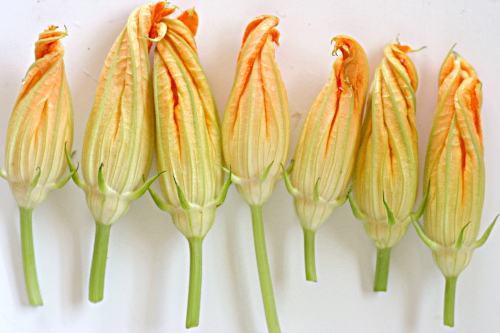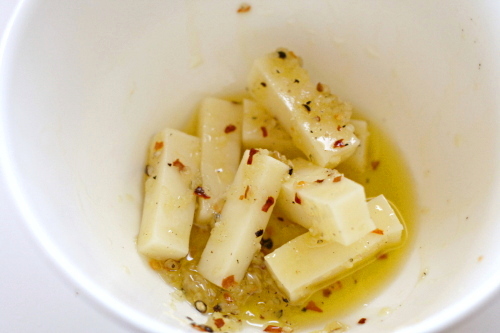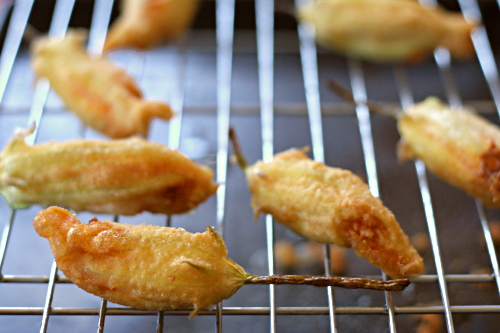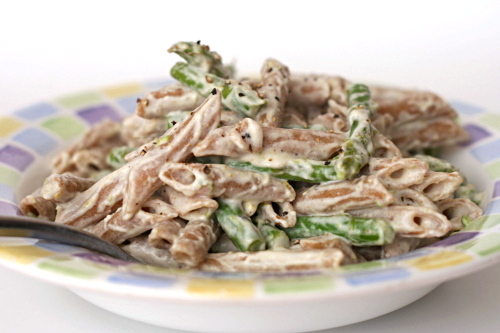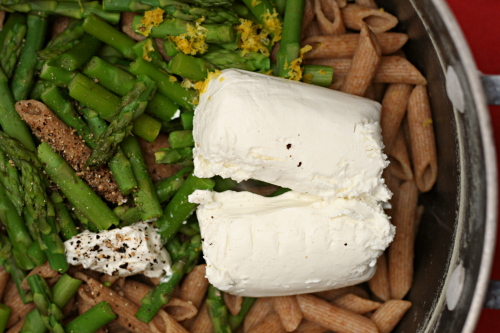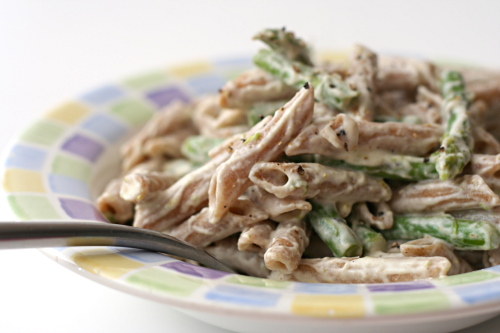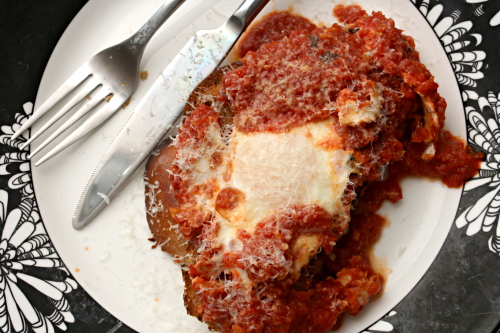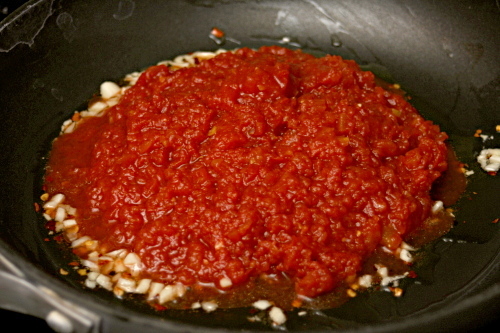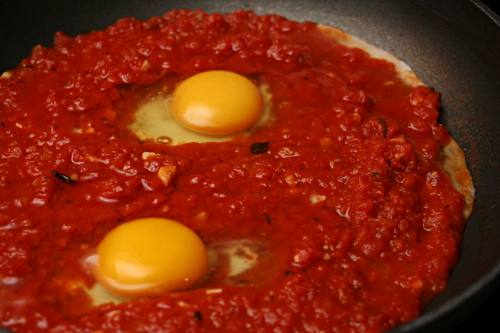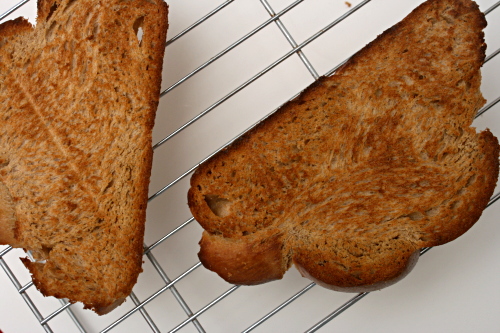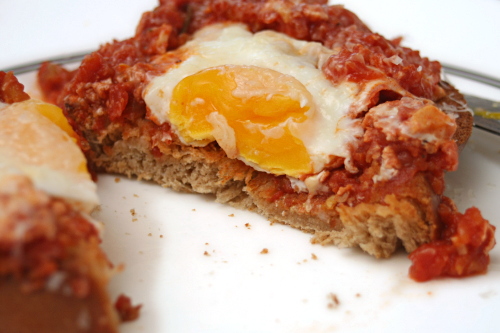I’m always a little disappointed that, living 300 miles away from my family and half a country away from Dave’s, we’ll always be traveling for Thanksgiving and I’ll never get to host. So when the grocery store offered me a free turkey just for doing my normal shopping, I got to thinking that maybe instead of donating it to a food bank or cooking it to shred for leftovers, I could make a full turkey dinner just for me and Dave. I had a grand ol’ time choosing recipes, and then I went through each and tweaked them until they hardly resembled the originals.
This one was originally a pizza, but I wanted cute little individual servings. Scallions didn’t seem like a good match for the squash, and when I thought on it more, neither did the crunch of red onions, but sweet caramelized onions sounded good. Then I needed something tart to counter the sweetness, and goat cheese was the answer. I exchanged the bacon for pancetta because pancetta’s hint of fall spice would compliment the squash.
Obviously, the main reason I make turkey dinners just for the heck of it is because it’s fun. But it doesn’t hurt to get practice, because someday, one way or another, I know I will get a chance to host. And practice is important when you’re talking about cooking a huge finicky chunk of meat, and, speaking of finicky, how about phyllo. Phyllo takes practice, but, due to its association with lots of butter and with a delicious squash goat cheese pancetta filling, it is never bad; it is always very, very good.
One year ago: Sopaipillas, Cranberry Nut Dessert, Mashed Potatoes with Root Vegetables, Pumpkin Yeast Bread
Two years ago: Chocolate Chip Cookie comparison, Lime Meltaways, Chanterelle Salad with Speck and Poached Eggs (ugh, I’m trying not to dwell on the days when I was able to buy ingredients like chanterelles and speck – or when I had time to post every day for a month, for that matter), European-Style Hearth Bread
Printer Friendly Recipe
Butternut Squash and Pancetta Phyllo Cigars (adapted from Gourmet via epicurious)
Makes about 16 appetizers
6 ounces pancetta, diced into ¼-inch cubes
1 onion, chopped fine
1 small butternut squash, peeled, diced into ½-inch cubes
1 tablespoon fresh rosemary leaves, minced
4 ounces goat cheese
8 ounces phyllo, defrosted
6 tablespoons unsalted butter, melted
2 ounces (1 cup) parmesan, grated
1. Heat the oven to 425 degrees. Line a baking sheet with parchment paper or a silicone mat.
2. In a 12-inch nonstick skillet over medium heat, cook the pancetta until crisp, about 8 minutes. Using a slotted spoon, transfer the pancetta to a large bowl. Drain the fat in the pan into a small bowl. Transfer 1 tablespoon of fat back to the pan and add the onions. Cook, stirring occasionally, until the onions are lightly browned around their edges, about 8 minutes. Transfer the onions to the bowl with the pancetta. Add another 1 tablespoon reserved pancetta fat to the pan; add the squash. Cover the pan and cook, stirring occasionally, until the squash is browned and tender, about 15 minutes. Use a potato masher to lightly mash the squash, then transfer it to the bowl with the onions and pancetta. Add the rosemary and goat cheese to the bowl; stir to combine.
3. Unroll the phyllo and place it between two damp dishtowels. Lightly spray a second baking sheet with nonstick spray. Lay a sheet of phyllo on the oiled pan; brush lightly with butter and sprinkle with parmesan. Fold the phyllo in half parallel to the short end to form a 7-by 9-inch rectangle; spray with nonstick spray. Scoop 2 generous tablespoons of the squash filling onto the phyllo; spread the filling about 1 inch from the folded edge, leaving ½-inch free on either end. Roll the long end of the phyllo over the filling; fold the edges in; continue rolling to form a cigar shape. Transfer the cigar to the lined baking sheet. Repeat with the remaining phyllo and filling, including spraying the baking pan work surface with nonstick spray, spacing the cigars about 1-inch apart on the parchment-lined baking sheet.
4. Bake until golden brown and crisp, about 15 minutes. Let cool about 15 minutes before serving.






